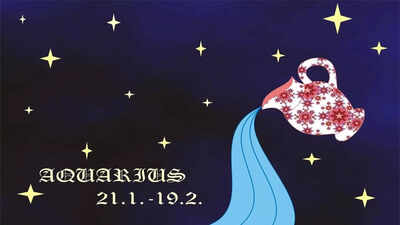For years, the cold, murky waters of False Bay were home to animals that were sleek, powerful, and unmistakably apex. Great white sharks had ruled these waters for decades, stealthy and silent until a sudden burst of motion shattered the calm. But then, the splashes stopped.
One year, fewer sharks were seen. The next, even fewer. By 2018, the hunters had vanished.

And what followed wasn’t silence...
it was change. A sprawling stretch of sea off South Africa’s coast, False Bay is no stranger to ecological drama. This nearly 380-square-mile bay has long been a seasonal gathering ground for Carcharodon carcharias , better known as the infamous great white shark.
During the colder months, many would patrol the waters around Seal Island, where tens of thousands of Cape fur seals ( Arctocephalus pusillus ) clustered. In warmer months, the sharks moved closer to shore, hunting fish and other sharks, including large-bodied competitors like the sevengill shark ( Notorynchus cepedianus ). But sometime after 2015, this pattern began to unravel.
Boat-based surveys, conducted over two decades, recorded a sharp drop in sightings (an 82% decline between 2016 and 2020, to be exact). No white sharks have been seen there since August 2018. What caused this sudden disappearance is still uncertain.
Some point to increased removals from shark control programs along the South African coast. Others suspect a different predator entirely: a specialized group of orcas that target sharks, including white sharks . These orcas have been seen disemboweling sharks and extracting their livers, a high-energy organ, with surgical precision.
Whether it was fishing nets or orca teeth, the result was the same: an apex predator vanished. But nature doesn’t like a vacuum. The absence of white sharks didn’t just leave Seal Island eerily quiet.
It triggered a ripple effect, one that began with the sharks’ prey and worked its way down the food chain. See, top predators like white sharks don’t just eat other animals. They shape ecosystems by influencing the density, physiology, and behavior of their prey.
This can create ripple effects that cascade through multiple trophic levels. In coral reefs, for example, the presence of sharks alters how and where herbivorous fish feed, which in turn affects seaweed growth and habitat structure. But studying these cascading impacts in marine environments is tough — there’s a lack of controlled experiments, field data is limited, and large predators are hard to track.
That’s why long-term monitoring programs, like the one in False Bay, are so valuable. Researchers recently analyzed a 20-year dataset of standardized shark surveys from Seal Island, focusing on how the decline of white sharks affected the broader ecosystem. The new study combined long-term monitoring data, citizen science sightings, and visitor statistics, and offers a rare look at what happens when a top predator disappears not gradually, but almost overnight.
From 2000 to 2015, shark sightings were relatively stable, averaging 1.64 white sharks per hour of survey. Between 2016 and 2020, that number dropped to 0.
3 per hour. And Cape fur seals, the sharks’ main prey at Seal Island, seemed to respond quickly. To understand how seal numbers changed over time, the research team turned to public databases like iNaturalist and the Global Biodiversity Information Facility (GBIF), where they found that between 2009 and 2015, there were about 10 reported sightings per million visitors to the area.
After the shark decline, that number jumped to over 65 — a 520% increase. In fact, even accounting for fluctuations in visitor numbers due to the Covid-19 pandemic, the trend held strong! And the seals’ distribution changed, with sightings reported across a broader stretch of coastline. Their behavior.
.. shifted.
So did their stress levels, which dropped noticeably after the sharks disappeared. And something else happened too: sevengill sharks, historically rare around Seal Island (likely due to predation pressure from white sharks) suddenly began appearing in boat surveys. The emergence of these large animals hints at a reshuffling of the predator hierarchy.
With their rise, new prey came under pressure. Sevengills feed on smaller benthic sharks and rays, meaning that white shark loss may have indirectly caused declines in entirely different species. This kind of top-down ecological shift, known as a trophic cascade, has been documented in a handful of marine systems (like the coral reefs mentioned above), but rarely with such clarity.
The ecological implications are clearly complex. An increase in seal and sevengill populations means more pressure on the species they consume, like small pelagic fish and smaller sharks. But as with many real-world systems, it’s not always a straightforward chain reaction.
A similar study on the Great Barrier Reef , for example, found no clear link between shark numbers and the density of their prey. In False Bay, too, environmental variables likely play a role. Still, the absence of white sharks marked a clear before-and-after moment in the system.
And what this long-term study highlights is both the importance and the challenge of understanding apex predators in the wild. Sharks are highly mobile, elusive, and often difficult to study over long timescales. But their influence reaches far beyond their bite.
While white sharks may still be present elsewhere in South Africa, their disappearance from this specific ecosystem has left a measurable void. Filling that void are new patterns of behavior, population booms, and shifting predator roles. As this work shows, losing a top predator can shake the foundation of an ecosystem—though exactly how it plays out may depend on the location, species involved, and even who steps into the power vacuum next.
.
Technology

The Ecological Fallout Of Losing White Sharks In South Africa

When top predators vanish, everything shifts. False Bay’s white shark disappearance has set off a chain reaction affecting prey, competitors, and habitats.















